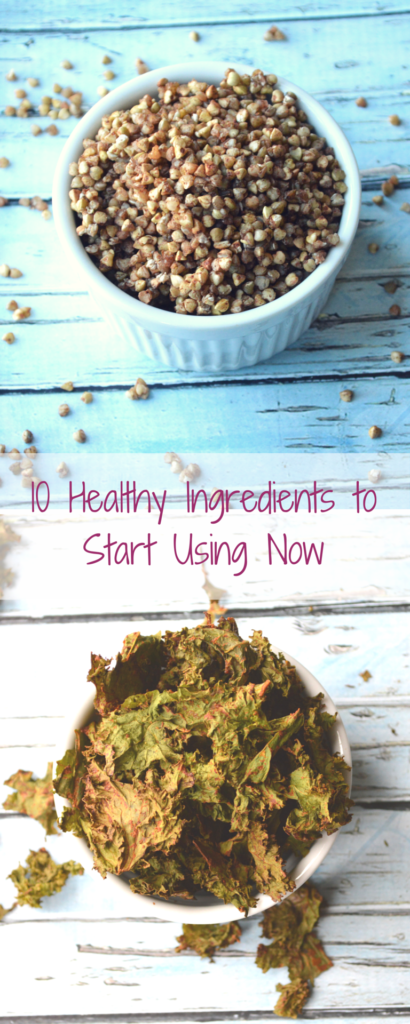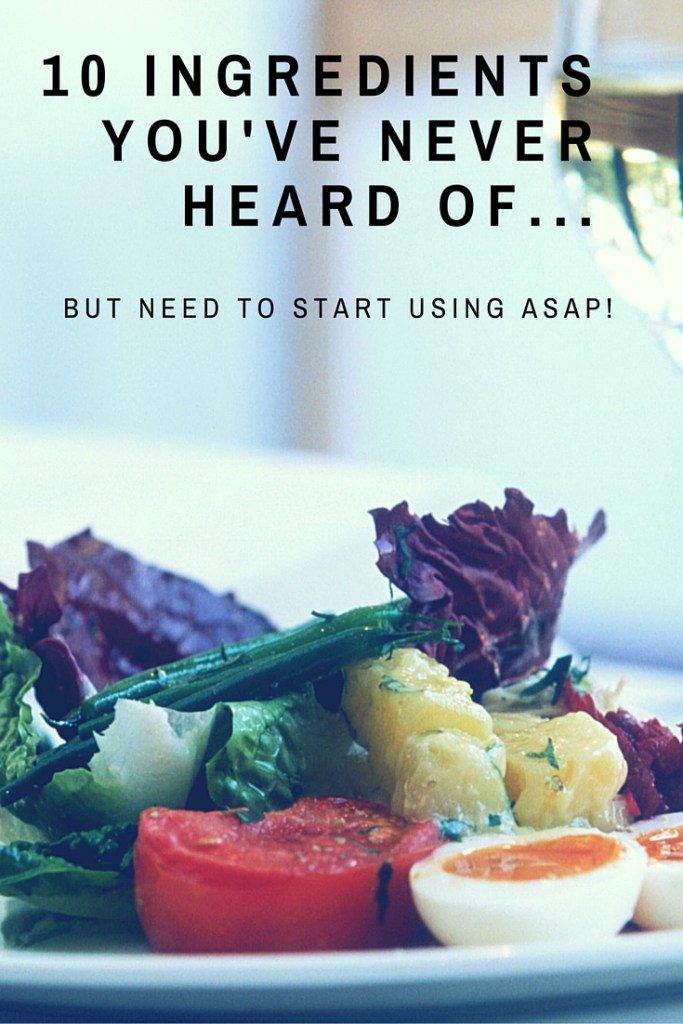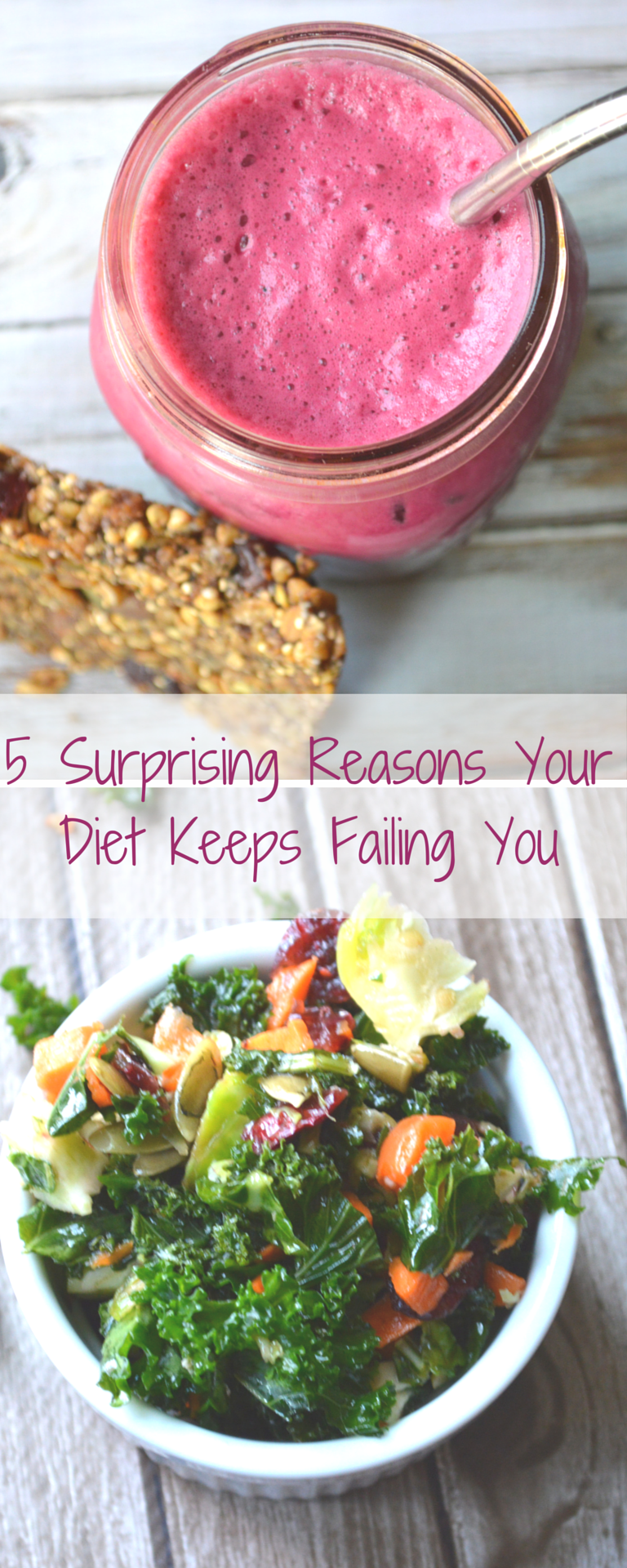This summer, I’ll be featuring some healthy living guest experts to share with you amazing tips, tricks and techniques that go beyond what you normally find here on The House of Healthy. You’ll find new and exciting ways to get healthy all summer long.
The week’s guest is Jenny Berk from JennyEdenCoaching.com. You’ll find her tips on health eating both fun and nourishing.
Enjoy!
![]()

The saying goes that there is nothing new under the sun. This may be true but maybe we just haven’t explored everything under the food sun just yet. Try “brightening” your palate and your plate by incorporating these lesser-known but delicious and versatile ingredients into your cooking. If you already use some of these, try a new one on your list this week and let me know how you like it! Post a picture of your recipe.
1.Nutritional yeast aka Noosh or Hippie Dust
What is it? A form of deactivated yeast flakes. Used often as a cheese substitute for vegetarians and vegans, it has a nutty flavor.
Why use it? Is considered a complete protein, is a good source of fiber, iron, folic acid and zinc. It adds B-complex vitamins to the diet. Plus it’s an option for the hard-to-find vegetarian option of obtaining the coveted B12 vitamin.
Where to buy it? Look for it at Whole Foods or any health food store.
Example of how to use it: Sprinkle over popcorn, pasta (like Parmesan), or add to soups, stews and in place of cheese for dishes like mashed potatoes.
- Liquid smoke
What is it? Made by chilling the smoke from smoldering wood chips – it condenses it into water droplets that trap the smoke flavor.
Why use it? For vegetarians, it adds that smoky, meaty flavor to your meat substitute dishes such as a seitan, chili or braised tofu. Note: It’s a nutritionally negligent “food” and really used for flavor.See this article for more information.
Where to buy it? Whole foods and most regular supermarkets.
Example: See my African stew.
- TVP
What is it? TVP is a defatted soy flour product that acts like and has the texture of ground meat. It’s gluten-free and offers a rich nutritional composition.
Why use it? For vegetarians and vegans alike, the mouth feel is essentially like ground meat and thus is an excellent meat substitute for foods like chilis, sloppy joes, meat sauces etc. It is inexpensive, very versatile and a high quality protein source.
Where to buy it? Look for it in general supermarkets, Amazon and Whole Foods.
Example: Vegetarian Polenta Casserole
- Kimchi
What is it? Think of Kimchi as a garlicky, spicy pickle like sauerkraut or kosher pickles, but with more of a kick.
Why use it? It’s a natural way to get your probiotics, and its funky flavor enhances many dishes.
Where to buy it? It’s become so popular, you can now find it in most supermarkets.
Example of how to use it: Use it straight from the jar as a side dish; add it to grains, fish and seafood, vegetables and casseroles. Kimchi mayonnaise is great for sandwiches and tofu salad.
- Rice paper
What is it? It’s a thin semitransparent edible paper sheet made from starches such as rice and/or tapioca. Known as
Bahn Trang in Vietnamese cuisine, it’s briefly rehydrated and used for summer rolls, or deep-fried for spring rolls.
Why use it? It’s incredibly versatile, neutral in flavor and provides great wrappers for foods such as spring rolls, summer rolls and dumplings.
Where to buy it? It is available in the Asian section of most supermarkets.
Example of how to use it:
Method: Immerse the sheet in a bowl of hot water for several seconds. Remove and place on a damp towel. Use immediately. Fill with any filling of choice, place on a plate and keep covered with a damp towel. Example: Use filling of choice, such as minced stir-fried vegetables, shrimp minced with ginger and scallions for dumplings, wrap around asparagus spears and deep-fry or fill with salads for summer rolls. Any Asian vinaigrette will make a great dip for these.
- Preserved Lemons
What is it? Lemons preserved in a salt base.
Why use it? It will liven up dull dishes that need a burst of flavor.
Where to buy it? You’ll find it at most gourmet or Middle Eastern markets. Better still, make it yourself. See recipe below.
Example: Chopped or in strips, it’s a great addition to fish and seafood, grains, salads and sauces. It pairs well with olives, tomatoes, and peppers and is great in a vinaigrette or mayonnaise.
Recipe:
6 lemons
Kosher salt
Olive oil
Make four lengthwise slits, through the rinds of the lemons, leaving them whole. Pour ¼” of the salt into a 1-quart sterilized jar. To sterilize, immerse the jar in boiling water for 1minute – do not wipe dry. Pack in the lemons. Fill the jar with enough salt to fill all the empty spaces. Cover and let sit in a cool spot for a week. With a spatula, press down on the lemons to release some of the juices. Add more salt, if needed to within ½ “ of the top of the jar. Add olive oil to within 1/4” of the top, secure the lid and let lemons sit in a cool place for 3-4 weeks longer before using. NOTE: Use the rinds, which come off easily, and rinse well to remove salt before using.
- Berbere
What is it? It’s an African chili-based spice mix widely used in Ethiopia and Eritrea.
Why use it? It adds an aromatic complexity and some heat to any dish.
Where to buy it? It’s available in gourmet markets, and widely available on line.
Example of how to use it: It’s a great vegetarian and vegan seasoning and goes well with all vegetables, grains and beans, so you can use it in your soups and stews. It’s great mixed with some curry powder, sprinkled with a little oil on sweet potato wedges and roasted in the oven and served with sea salt.
- Angostura bitters
What is it? This is an alcohol-based mixture of concentrated herbs and spices originally sold in 1824 as a tonic. It has since become a very popular addition to cocktails.
Why use it? It is now becoming more widely known as a flavor booster for foods, adding a hint of bitterness and complexity.
Where to buy it? It’s available in most supermarkets.
Example of how to use it: It’s useful to offset dishes with a sweet accent like vegetable soups, root vegetable dishes or for additional interest to stews, fish dishes, marinades, vinaigrettes and fruit desserts.
- Sorghum
What is it? A rich powerhouse of nutrition, this high-fiber ancient grain is making a comeback touting its delicious flavor. It’s also gluten-free!
Why use it? Rich in niacin, riboflavin and thiamin as well as an ample source of magnesium, iron and copper.
Where to buy it? Widely available in Whole Foods and other health food stores. I like Bob’s Red Mill brand the best!
Example: Did you know you could make popped sorghum? Try this recipe out!
10 .Shiso leaf
What is it? It’s an herb, sometimes known as Japanese basil. It is in the mint family and has a fragrant minty flavor with a hint of licorice.
Why use it? It’s best-used fresh in a fine chiffonade sprinkled over dishes and really enlivens flavors of foods it’s used with.
Where to buy it? Check your local Asian markets and it’s available on Amazon.
Example of how to use it: Use it with salads such as avocado and grapefruit, or cucumber with sesame oil, rice vinegar and a bit of sugar.
What are some strange or exotic ingredients you have been using lately? Sound off below!
~ Jenny Berk, Certified Eating Psychology Coach, Mindful Eating Instructor and wellness blogger
 Jenny is the founder and owner of Jenny Eden Coaching – a coaching practice devoted to help men, women and teens create a more healthy and sustainable relationship with food and their body image. She is an Eating Psychology Coach, a mindful eating instructor and health and wellness blogger. She has a weekly blog on the Huffington Post Healthy Living section as well. She specializes in kind and gentle weight loss, unique binge eating cessation techniques and mindful eating practices.
Jenny is the founder and owner of Jenny Eden Coaching – a coaching practice devoted to help men, women and teens create a more healthy and sustainable relationship with food and their body image. She is an Eating Psychology Coach, a mindful eating instructor and health and wellness blogger. She has a weekly blog on the Huffington Post Healthy Living section as well. She specializes in kind and gentle weight loss, unique binge eating cessation techniques and mindful eating practices.
Jenny received her Masters from the University of Pennsylvania in Psychological Services from the School of Education and was a Health Educator at Health Management Resources for thirteen years prior to launching her practice. She earned her certificate from the Institute for the Psychology of Eating in 2015 and her MB-Eat certificate in 2016. You can connect with Jenny on Facebook and Twitter, or check out her latest program, The Spring Soup Series, for the ultimate in healthy eating.

